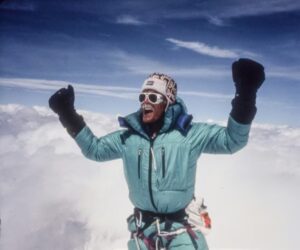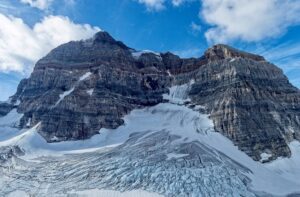Chaos. Carnage. Walking over dead bodies. Corruption. Egos. We’ve all heard the dark stories from this year’s Himalayan season. But is Everest really getting more dangerous? The numbers show a different picture.
Since the days of Mallory and Irvine, peril has always accompanied an Everest expedition. But the public perception of risk soared after 1996, in which eight climbers died in a storm, and the bestseller Into Thin Air described that event to hundreds of thousands of readers. That year also happened to be precisely when the two first big commercial outfitters (Adventure Consultants and Mountain Madness) entered the scene.
Four more people perished on the mountain in 1996, for a total of 12, while 98 climbers reached the coveted summit. This gives a summit-to-death ratio of 12%.
This year, 11 people died on Everest, while the number of summits is a whopping 850! The ratio therefore decreased to 1.2%.
The following charts compiled by the ExWeb/AdventureStats team shows that the summit-to-death ratio has been steadily decreasing over the last two decades. The increased use of supplementary O2 and HA Sherpas supplying camps and accompanying climbers, improved equipment, better weather forecasting and enhanced coordination among expedition teams to assist in case of rescue have all helped improve the odds.

Summits and fatalities by year. Compiled by ExplorersWeb/AdventureStats

The steady decline in the summit-to-fatality ratio over the last 20 years. Compiled by ExplorersWeb/AdventureStats
Note that the above charts do not count the anomalous years of 2014-15. In 2014, the deaths of 16 Sherpas who were preparing the route through the Khumbu Icefall led to the cancellation of the entire climbing season. Same with the 2015 earthquake. This is not to discount Sherpa deaths, which are included in other years. But because of the cancellation, those two years had zero summits, which would skew the ratio unnaturally.
Causes of death
Those tragic events are, however, included on the graph below, compiled by the Himalayan Database. Because of their different roles on the mountain, working Sherpas and foreign climbers occupy different ends of the chart.

Causes of death on Everest for both Sherpas and foreign climbers. Compiled by the Himalayan Database
The early pioneers perished mainly in mountain accidents. Lack of weather forecasts, poor route information, inferior gear, virtually no communication and few possibilities of rescue greatly increased the risk of being caught in a storm or an avalanche or falling when a rope broke or a crampon tip snapped.
In modern times, as more people attempt to climb the mountain, altitude sickness and hypothermia have become more prominent. Traditionally, the north side featured a noticeable lower number of summits and greater mortality rates, due to strong northerly winds, higher camps and no chance to be helicoptered out in case of altitude sickness.
Meanwhile, the popular Nepalese side has slowly increased its percentage of casualties from falling seracs in the Khumbu icefall and, this year, too many climbers jamming the upper sections who run out of O2 while waiting in line or collapse from fatigue on the way down.
Both sides have their pros and cons, but technical advances have actually made Everest safer. It’s just more crowded.
Incidentally, the worst summit-to-fatality ratio among the 8000’ers remains Annapurna, followed by K2 and Nanga Parbat. Everest sits in 10th position. By this yardstick, only Gasherbrum II, Lhotse and Cho Oyu are less deadly.






